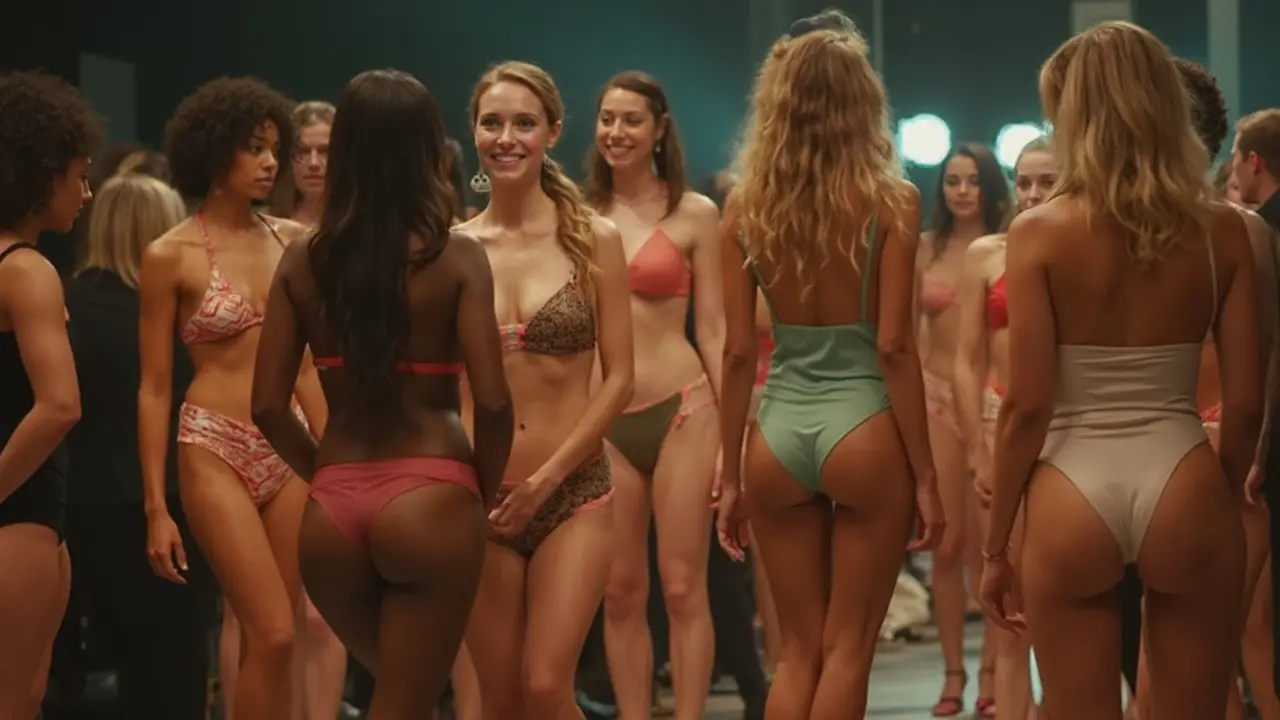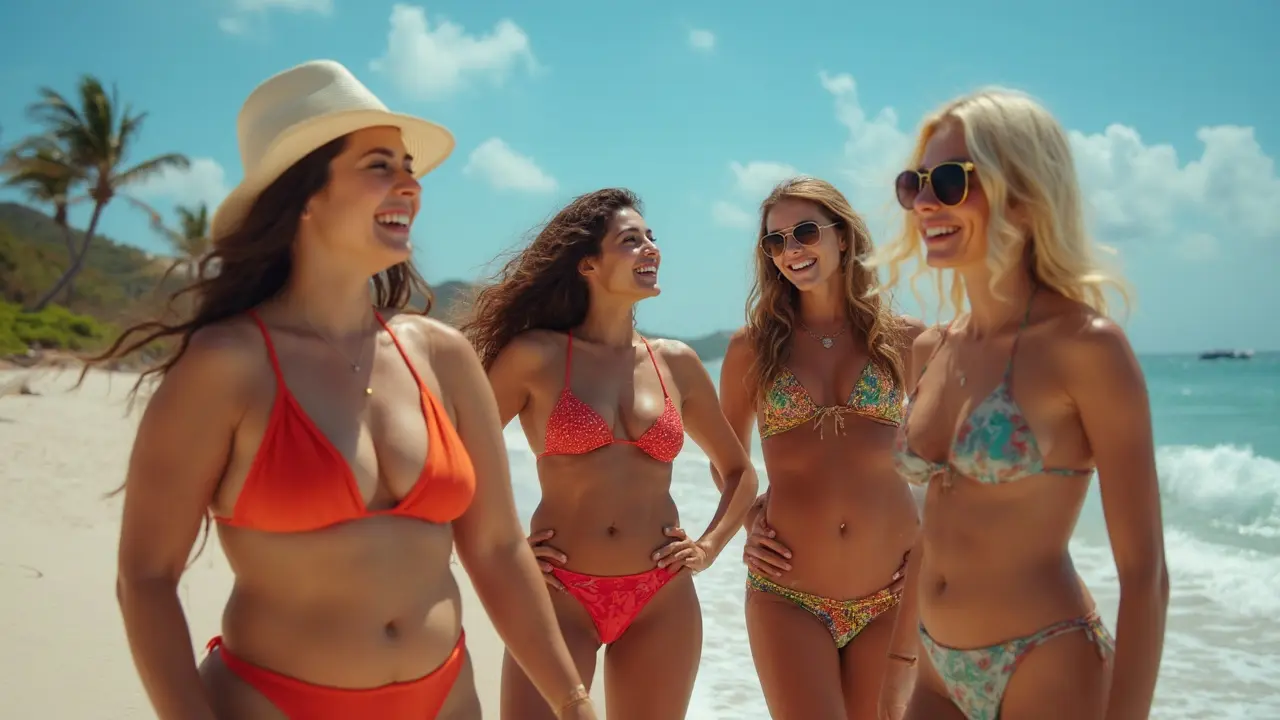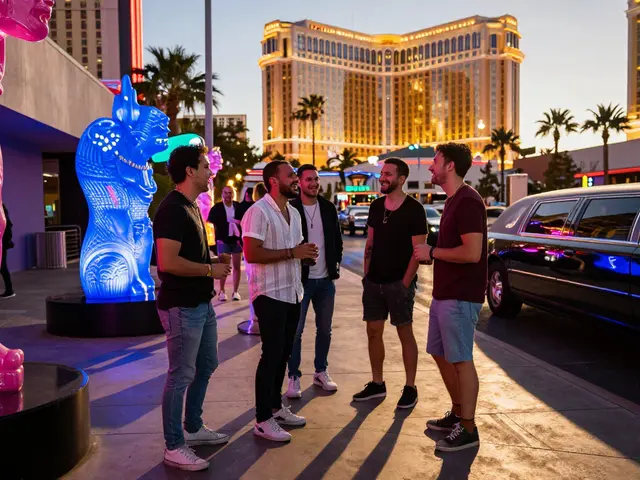Ever noticed how bikini models have totally changed the vibe of fashion? It's not just about looking good on the beach anymore—they're setting the pace for the whole industry. Bikini models are showing up everywhere, from Instagram feeds to runway shows, turning heads and starting new trends for body positivity and style.
If you’re thinking about how all this works, you’re in the right place. Bikini modeling isn’t all photoshoots and sunscreen—it’s hard work, confidence, and knowing the business. Even if you’re not aiming to be a model, there’s a lot to pick up about style, self-care, and the future of fashion in this world.
Want to know the cool part? The industry is opening up. It’s not just for one body type, age, or look. There’s demand for real people, real curves, and real confidence. Social media lets anyone with drive build their own following—no giant agency required. If you’re ready to dive in or you just want to see what’s next for bikini models, keep reading. There are details here you won’t want to miss.
- Bikini Models Redefining Fashion
- Why Bikini Models Matter Today
- Different Types of Bikini Modeling
- How to Start a Career as a Bikini Model
Bikini Models Redefining Fashion
Bikini models are breaking all the old fashion rules. Flip through any swimwear campaign lately and you’ll see what I mean. Brands like Sports Illustrated made headlines when they included models like Ashley Graham, who pushed the boundaries for body positivity in a big way. Now, it’s normal to spot models of different shapes, ages, and backgrounds on billboards and in online stores.
The rise of social media turned things around for the industry fast. Platforms like Instagram and TikTok made it possible for anyone with a phone and some confidence to gain a following as a bikini model. Big names like Sommer Ray and Alexis Ren didn’t just get noticed by agencies; they built entire brands off their online presence. Suddenly, companies started seeking out influencers with a real audience—not just traditional models on agency rosters.
This shift means trends start with actual people, not just elite fashion insiders. Bikini models now influence how swimwear gets made, marketed, and even photographed. Instead of one body type, you see petite, tall, curvy, athletic, and more. This change isn’t just about looks—it sends a powerful message that confidence and self-acceptance are always in style.
Today, the bikini modeling world is more about authenticity than perfection. Brands want to connect with everyday people. Some companies like Aerie no longer retouch their bikini models, proving that real skin and body variations are nothing to hide. That’s why bikini models are leading the way, making fashion more inclusive for everyone—and that’s something worth paying attention to.
Why Bikini Models Matter Today
Bikini models are everywhere these days, but their impact goes way beyond just swimwear ads. They’re driving serious change in the fashion world, and it all starts with how they represent real people. A few years back, runway shows and magazines mostly featured one look—tall, super thin, pretty much cookie-cutter. Now you see bikini models of all shapes, sizes, and backgrounds. That shift kicked off a wave of body positivity that’s still picking up speed in 2025.
It’s not just talk—big brands like Sports Illustrated started putting different body types on magazine covers. In 2022, Yumi Nu made headlines as the first Asian plus-size model on their Swimsuit Issue. That moment wasn’t just for clicks. It made a ton of people feel seen, and showed brands there’s a real demand for diversity in fashion.
Social media changed the game, too. Once upon a time, only big agencies could call the shots on who got to be a “successful” bikini model. Now, anyone can build their own brand online. TikTok and Instagram are filled with models—some signed to agencies, some totally independent—connecting with fans and clients without needing a middleman. It’s made things more equal, and honestly, way more interesting.
This has given rise to lots of new voices and faces in the bikini models scene. Brands want models who actually use and love their products, not just people who fit into a specific size. You’ll see models talking about daily life, sharing workout tips, even posting makeup fails or behind-the-scenes moments. This realness helps brands, too. Shoppers trust models who feel relatable. According to a 2024 Shopify report, brands using diverse models saw their sales jump by 19% over those sticking with the old-school look.
All of this matters even if you never want to model. Why? Because what we see in ads, magazines, and online shapes how we think about our own bodies and style. Bikini models are pushing fashion to be more honest, more fun, and way more personal than it was a decade ago.

Different Types of Bikini Modeling
So, here’s where things get interesting. Bikini modeling isn't just posing by the pool for glossy magazine covers anymore. There are lots of different gigs out there—and each one has its own flavor and requirements. The cool part? You don't need to fit a single mold to succeed. Check out some of the main types below.
- Bikini models in Commercial Modeling: These are the models you see in ads for big swimwear brands, catalogs, and online shops. Commercial gigs want models who are relatable and have a natural, approachable vibe. Think Target, Aerie, or even big box stores' websites.
- Fitness Bikini Modeling: This branch focuses on athletic looks and often overlaps with fitness competitions. Models usually show up in magazines, supplement ads, and even on stage. The look is toned, but not necessarily super muscular. Big events like the NPC Bikini division draw thousands of viewers each year.
- Editorial Bikini Modeling: If you love glossy spreads in fashion magazines, this is the vibe. Editorial shots are bold, artistic, and sometimes a little edgy. Models here help shape trends and push creative limits. You’ll find lots of these on platforms like Vogue and Elle.
- Runway Bikini Modeling: These models strut swimwear collections during fashion weeks (think Miami Swim Week or the Sports Illustrated Swim Runway). Height and walk matter more here—a little difference from commercial or fitness gigs.
- Social Media and Influencer Modeling: No agency? No problem. Social platforms have exploded with new opportunities. If you build a following, brands reach out for collaborations, try-ons, and promotions. In 2024, over 40% of swimwear campaigns used influencers, not just traditional models, according to Swimwear Market Analysis.
Wondering how much bikini models can actually make? Check out this quick table:
| Type | Typical Pay per Shoot (USD) | Main Requirements |
|---|---|---|
| Commercial | $250 - $1000 | All body types, smile, natural look |
| Fitness | $200 - $1200 | Athletic build, sometimes competition experience |
| Editorial | $500 - $2000 | Edgy, high-fashion look |
| Runway | $800 - $3000 | Tall, confident walk |
| Social Media | Varies ($100 to $10,000+ per campaign) | High engagement, followers |
As supermodel Ashley Graham said in a 2023 interview,
"Modeling used to mean fitting into someone else's idea of beauty. Now you can build your own community and write your own story—bikinis and all."
Each type of modeling brings its own challenges and perks. It's smart to figure out which ones fit your style and skills best. Don’t be afraid to try a few different paths. The industry is way more flexible than it was just a few years ago.
How to Start a Career as a Bikini Model
The path to becoming a bikini model isn’t always a straight line, but it’s a lot more accessible than most people think. Breaking into bikini modeling starts with understanding what the industry actually looks for and how you can put yourself out there.
Your first step? Build a solid portfolio. Agencies and brands want to see good photos—think bright, natural light and simple backgrounds. Don’t over-edit. You don’t need a fancy photographer at first; plenty of new models start with a decent smartphone and a friend behind the camera. Just make sure your pictures are clear, sharp, and highlight your personality as well as your physique.
- Bikini models usually showcase confidence, body awareness, and comfort in front of a camera.
- Pick swimwear that makes you feel comfortable and shows off your best features.
- Include at least one headshot (no makeup is fine), a few full-body pics, and some action shots—think jumping, laughing, or even just walking.
Next up, get yourself noticed. Most agencies let you apply online now. Fill out a simple form, attach your pictures, and be honest about your stats—height, waist, hips, and so on. If you’re still growing, that’s cool. Just send them updates every few months.
Want to skip the agencies? Social media is your friend. Instagram, in particular, is a go-to for new models. Brands often scout there, looking for real-world personalities to represent them. Stay active, use relevant hashtags like #bikinimodel or #swimwearmodel, and tag brands you love. You never know who’s scrolling through your feed.
Keep in mind, building a career in this world isn’t just about looks. Good communication, reliability, and professionalism get you booked again and again. You’ll have to learn simple poses, know your angles, and always show up on time. A lot of models also invest time working out and eating for energy—nutrition matters more than crash diets or chasing a certain size.
- Network with other models, photographers, and makeup artists. Referrals can land you jobs faster than you expect.
- Be careful with offers that sound too good to be true. If anyone asks for fees upfront for portfolio shoots or “exclusive” contracts, do some homework and check their reviews.
- Most reputable agencies earn their money by finding you real work, not by charging you in advance.
This field takes some thick skin. Not every casting will go your way, and rejection is part of the game. Stay positive, keep learning, and remember that the industry is changing—realness and a unique vibe often stand out more than a perfect body.




